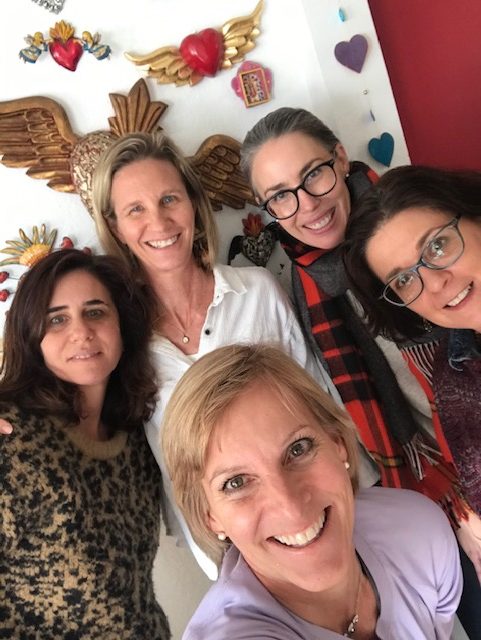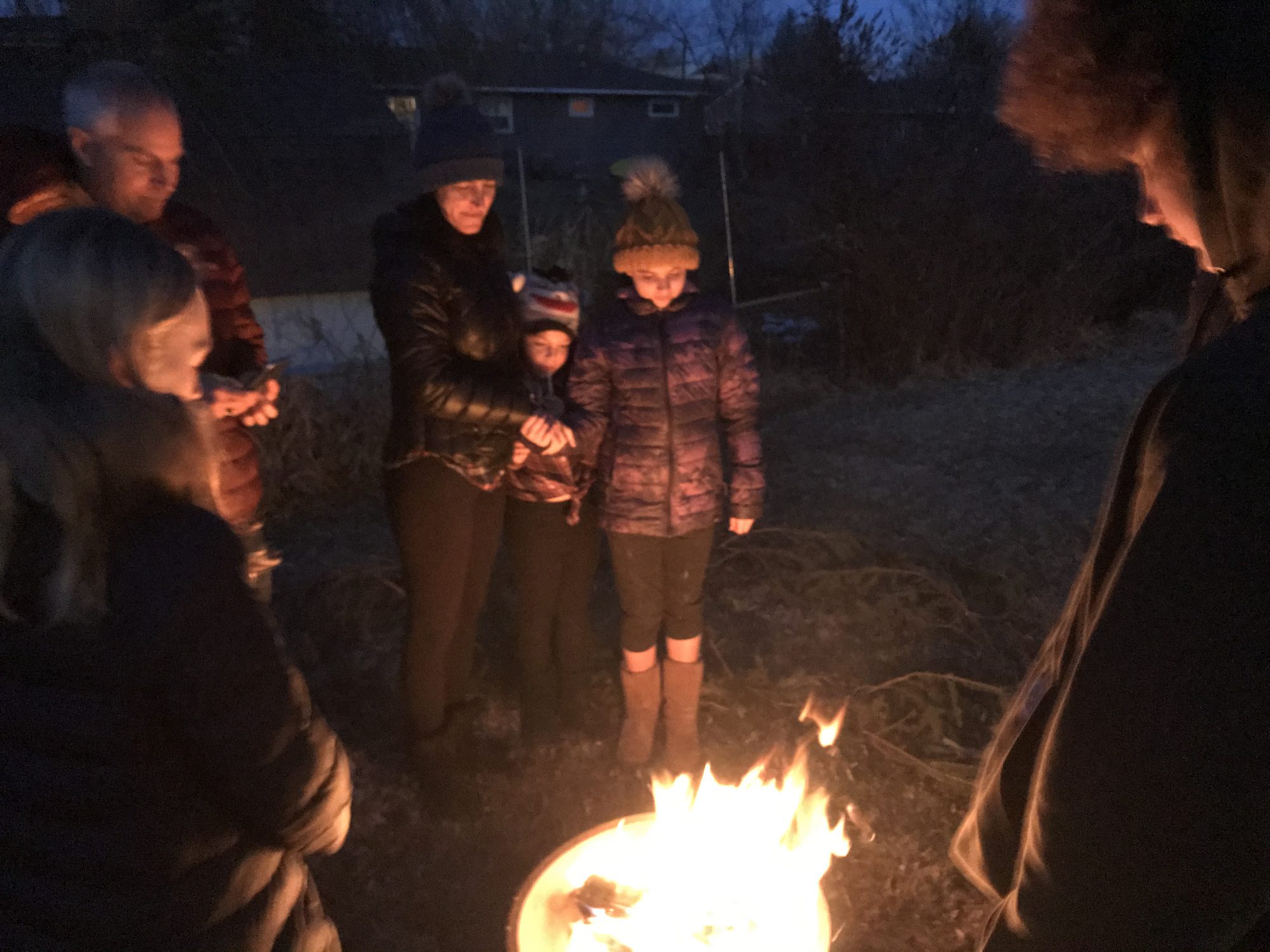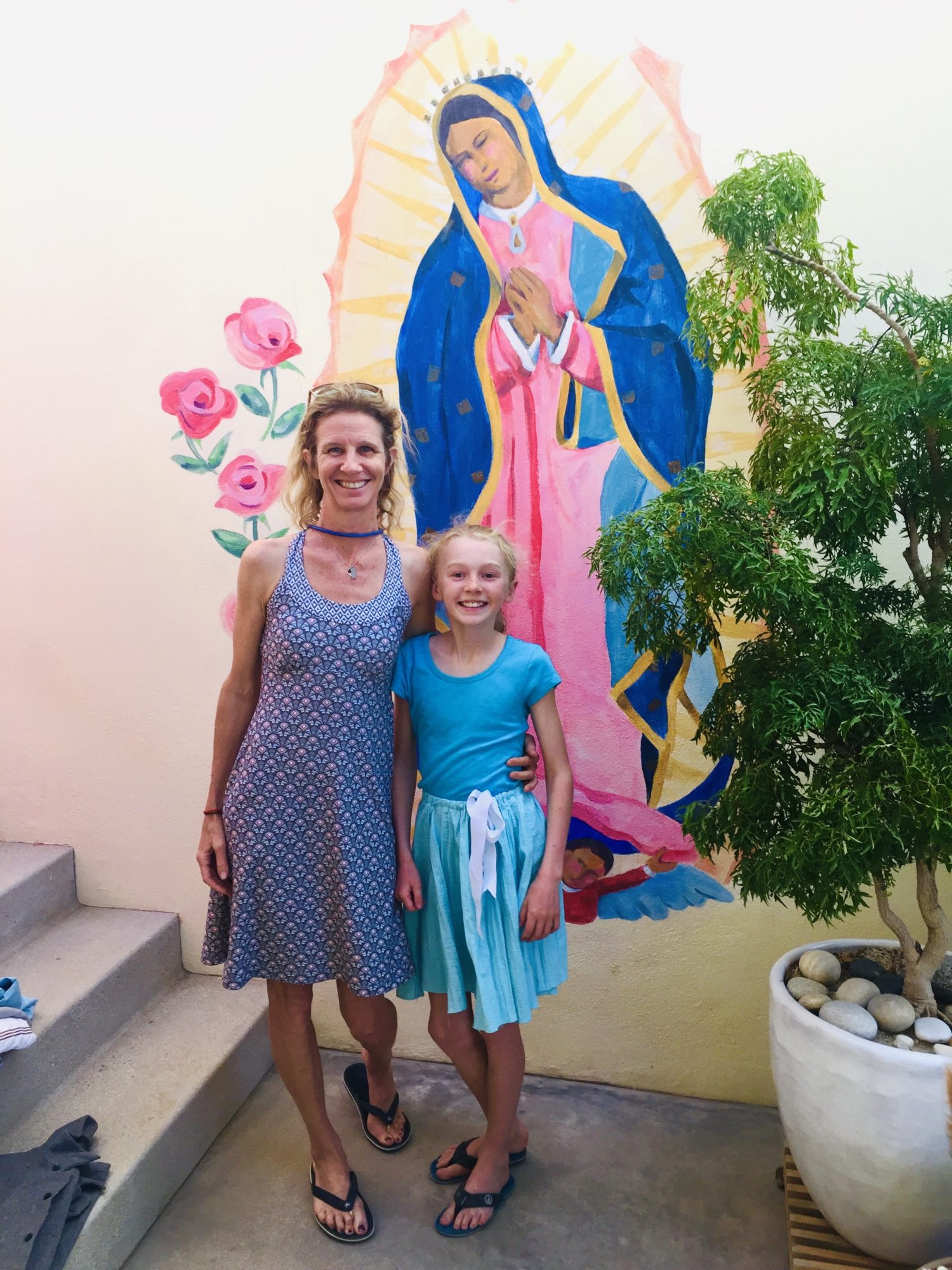Where is there room for brave over perfect and joy over fear in a pandemic?
To get through this, we need to get serious about two things: containing the disease and containing our fear about the disease.
If we can learn to be more comfortable in the unknown and master the skill of managing our fears and our expectations, we can make decisions easier, pivot faster, and feel calmer.
Happiness “doesn’t depend on how things are going,” says neuroscientist Robb Rutledge of University College London. “It depends on whether things are going better or worse than you had expected they would.” (source: The Atlantic, 2014.)
I thought I’d share 5 of the tools that have been working for me to continually recover from fear and find peace in uncertainty, in case they are helpful to you, too. There are so many more tools I use, but I chose these because they seem particularly relevant to the pandemic and its impact on us and our kids.
The only authority I have that these practices work is my experience. Right now that includes being immunosuppressed during a pandemic, living away from my family, having a rare form of cancer in my spine, undergoing chemotherapy, receiving radiation treatments, and not knowing if they are working until inflammation subsides and they scan me in…July.
I’ve been forced to get smarter about how I cope with rapidly changing, frightening times. I want to share with you what I’ve learned, so you don’t have to go through the above to learn these tools on your own. The brave over perfect, joy over fear revolution is about eliminating unnecessary suffering caused by our thoughts. It is also about helping us and our children get beyond disappointment and into creative, problem-solving mode quickly.
- Face Fear on your schedule, not his. I wake up 11 minutes early to make time to face Fear. If I don’t, Fear wins all day. When it wakes me at night, I use my SAFE tool. But by rolling up my sleeves and staring Fear down first thing in the morning, I create space for other feelings, like gratitude and joy. Here’s what to do. Purposefully bring up scary thoughts. Then notice the physical sensations that those thoughts make you feel with the same amount of attention you would use if you had to describe them in detail to a doctor. For ex) Ask yourself: Where do I feel in my body, not my head, the thought that someone I love might get sick? What is the sensation’s texture, shape, weight, and intensity? Try not to push Fear away or replace the thought. Keep going. Where else do I feel it? What name might I give these sensations? Then shift gently to: What is one thing I could do today to lessen that fear? Next, with each breath, imagine exhaling light and space into each place of tension. By using higher-level brain activities (focused attention and visualization), we take energy away from the fear center of the brain. What usually happens next is surprising. I don’t get stuck with the thought for long. My mind shifts on its own to things like, “I wonder what to eat for breakfast.” And the rest of the day, when I get triggered by something terrifying I just heard on the news, I remember to drop right into my body instead of staying in my head and manage the feeling from a place of calm attentiveness.
- Learn (and teach your kids) to Manage Expectations.This is from the amazing Julia Juster, who was trained in Success Counseling. When vacations are cancelled, big sports events erased, and almost everything kids look forward to (except maybe closing school) is now off the table for a disease that they haven’t even seen yet, it is hard to pivot. Our expectations often block our ability to get present and creative with what we CAN do now. Use these three simple questions to process the disappointment. Saying the answers out loud helps get to problem-solving quicker. Writing them down is even more effective. Ask yourself or your child, 1. What did you want to happen or expect to happen? 2. What happened instead? 3. How does that make you feel? (get granular: what is under the anger? Sadness, frustration, helplessness, confusion? 4.Then, move into problem-solving mode. For ex) Now that you can’t graduate on your college campus with all your classmates, what can you do to stay connected to them? How could you celebrate and honor this big moment differently, when you are all in different places? We get good at processing loss and pivoting if we first acknowledge our feelings, then train ourselves to be creators of our future instead of its victims.
- Find anchors to ground yourself and others. If your child or loved ones are feeling anxious, teach them the SAFE tool and the stress breath. Listen compassionately to their fears about the pandemic without trying to fix anything. Only after you’ve done that, give them this article (or tell them the main points) on 10 Reasons Why You Ought Not to Panic. My friend sent it to me and I was grateful for the fact-based way it gave me anchors to ground myself. Keep your eye out for things that ground you and then use them.
- Tame your tigers. Make two columns on paper. On the left side write one of your recurrent fears or “tigers”. Fill the left column first. Then, on the right side, write down at least one thing within your control that you could do to lessen that fear and tame that tiger. For ex) Left side: Fear of flying home on Friday in case I get sick from someone on the plane. Right side: Ask my doctor for a mask and gloves. Ask the airline if the plane isn’t full if I could sit alone due to a medical condition.
- Pay attention to signs of spring. Get outside more. Keep track of signs of spring on a list on the fridge or somewhere where everyone can contribute. Walk near water if you can, or up a mountain. Notice how much longer it is staying light. Hug a tree. (I am obsessed with trees and decided I’d try identifying the trees in the Boston Common. I cut twigs (almost got arrested) and keyed them out. Now the trees are budding and blooming and I can see if I was right! So fun. And then I discovered that the trees 100 feet away in the Public Garden are all labeled. I didn’t need to do all that work. Ha!) Spring happens fast: listen to how many new birds are singing now. Watch the people salsa dancing on the pier. Or eating their lunch outside. Notice that change is constant. And it can be beautiful.
These tools help me to remember that I am not in control. Then I focus on the one thing I can have some control over: how I choose to respond to disappointment and uncertainty.
I choose to respond by being brave enough to continually return to the present moment where I am safe, where I am resilient, where I trust I’ll make good decisions by collecting smart people all around me. And I know you will too.
Love,
Susie
***












